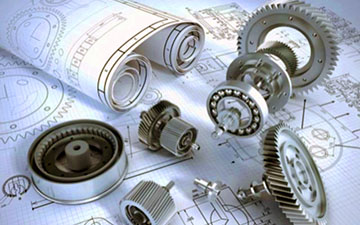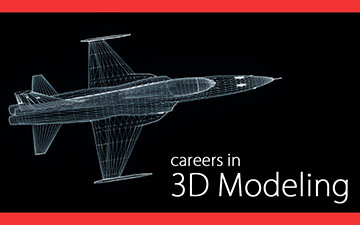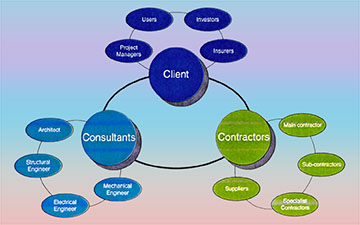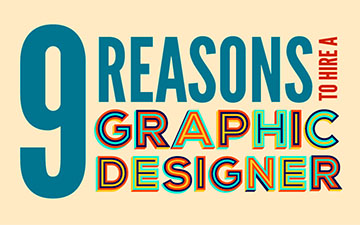DESIGN FOR MANUFACTURE & ASSEMBLY
Personal products are typically made up of smaller modules or components, all assembled to form a product that has one or more functions. Each sub-component should be important for the correct operation. The form of a product is determined by many factors, including the purpose, material, and manufacturing process. The DFMA philosophy which stands for Design for Manufacturing and Assembly urges designers to think not just about the form, material, function, and the manufacturing method but also in the assembly process, either manually or automatically, required to gradually build the end product.
Design for Manufacturing and Assembly (DFMA) is an engineering methodology that focuses on reducing time-to-market and total production costs by prioritizing both the ease of manufacture for the product's parts and the simplified assembly of those parts into the final product. Target costing for a new product comes from decisions made during the design phase as the designers are drafting blueprints for engineers to evaluate. This approach will map out what the product will be like, how it will work, what features it will have, and how it will be manufactured.
In the field of product development, DFMA should be embraced by designers because it guides them to simplify the structure of components and their assembly procedure, reduce the number of components, and control related costs. Product development can be simplified into a three-step process that starts from the design (details) and progresses to the assembly of the manufactured parts. Design is the stage where the materials, shapes, and tolerances of the individual parts of a product are defined. It is a process where simple ketches are transformed into detailed technical part drawings, often in 3D CAD (Computer-Aided Design) models. If DFMA aspects are not taken into consideration during the design stage, the manufacturing and assembly stage will eventually get delayed due to design optimization iterations. Decisions taken late in the design process come at higher costs. It is widely known that careful considerations of manufacturing and assembly early in the design process can reduce the total costs by over 70%.
SPONSORED CONTENT

Your Service Flyer

Your Event Invitation

Your Promotion Ads

Your Logo & Brand
Support us and grow your business with us. My goal was to make technical information available with ready access to commonly needed resources, formulas, and reference materials while performing my work as a Technical Support Engineer. The businesses listed in Sponsored Content section were randomly selected because of their uniqueness. However, non-sponsored selected ads wil be rotated monthly.
Viba Direct lacks an advisory board to do research and hire writers with the latest technological knowledge. Creating an effective advisory board requires more than an invitation. Without your sponsorship, this is not possible. If your company is interested in placing the company's logo, brand, eventinvitation, and otherpromotional banners and flyers here or on any other pages. Please reach out to Customer Service for more detail.
It was developed by Hitachi’s Assembly Evaluation Method (AEM) which used a point-loss standard to rate the ease of automatic assembly for a particular product. The Hitachi Assembly evaluation method facilitates design improvements by adopting the following approach (Miyakawa, S and Ohashi, T; 1986) by identifying weaknesses in the design at the earliest stage in the design process by using an assembly-ability evaluation score (E) and an assembly cost ratio (K).
Design for Manufacturing (DFM) and Design for Assembly (DFA) are now commonly referred to as a single methodology, Design for Manufacturing and Assembly (DFMA). This method results in several benefits, including:
‹•› Designing parts that are easy to align and combine | Design parts to be self-aligning and self-locating.
‹•› Minimizing the total number of parts and tools used during production | Minimizing overproduction by correctly estimating the total number of parts required.
‹•› Reducing the number of part drawings that need to be designed and approved | Reducing costly fastening operations | Reducing defects incurred due to scrap, rejects, rework, and correction | Reducing the cost of inventory.
Design For Manufacturing and Assembly is when designing both for manufacturing and assembly during a development process. Taking both variables into consideration generates the best result since e.g. integration of two parts also could mean an increased manufacturing cost. That combining these two aspects gives the best economics. The working process with DFMA can possibly look like the illustration below.
First Stage: Design concept → Design for Assembly → Suggestions for simplification of product structure →
Second Stage: Design concept → Design for Assembly → Selection of materials and processes and early Design for Manufacturing cost estimates → Suggestions for more economic materials and processes →
Third Stage: Design concept → Design for Assembly → Selection of materials and processes and early DFM cost estimates → Best design concept → Design for Manufacture → Detail design for minimum manufacturing costs → Prototype → Production.
The cumulative (tích lũy) effects of these advantages can lead to up to a 50% reduction in some parts, leading to a 35% cost reduction and 50% improvement in time-to-market. The most important guideline that the designers should follow to achieve the highest benefit is to reduce the number of parts inside an artifact as much as possible. This can be accomplished by combining two or more functions in a single component.
DESIGN FOR MANUFACTURE
Design For Manufacturing focuses on making the individual parts/components easier and less expensive to manufacture. The guidelines below help minimize the costs of extra equipment and design for easy and smart manufacturing.
‹•› Design parts with suitable surfaces for fixturing and also for easy localization. Fixtures are very crucial for any production process, especially in automated manufacturing, inspection, and assembly operations. They are often used for developing the finished parts that have stricter tolerances to accentuate the surface finish. Fixtures can fundamentally increase a product’s efficiency at many levels such as inducing easier loading and unloading of parts and diminishing the requirement of repetitive tasks.
‹•› Avoid designing geometric shapes that require specially made tools.
‹•› Avoid designing weak holes and threads, the tools can easily otherwise break.
‹•› Utilize standard tolerances, rounds, holes, and releases to minimize the need for different tools.
‹•› If possible choose a material that is easily machined.
Design for Manufacturing (DFM) is concerned only with reducing overall part production costs. It's designed for ease of manufacturing of the collection of parts that will form the product after assembly "Optimization of the manufacturing process..." DFM is concerned with reducing overall part production costs by minimizing the complexity of manufacturing operations with common datum features and primary axes. DFM operates on key principles that are critically considered during the design phase of any project. These principles are process, design, materials, environment, and compliance.
- Reduce the total number of parts. Fewer parts imply fewer purchases, inventory, handling, processing time, development time, equipment, engineering time, assembly difficulty, service inspection, testing, etc.
- Consider machinability materials. The higher the machinability, the faster a material can be machined. Typically, the softer and more ductile a metal alloy, the easier it is for the machine. Design parts that have a finished dimension of 3mm/.125inch smaller than standard blank size. Choose a material with a low bulk price, especially for low-volume orders.
- Develop a modular design. Modules in product design simplify manufacturing activities such as inspection, testing, assembly, purchasing, redesign, maintenance, service, and so on.
- Use of standard components. Standard components are less expensive than custom-made items. The high availability of these components reduces product lead times.
- Design parts to be multi-functional. Multi-functional parts reduce the total number of parts in a design, thus, obtaining the benefits given in rule 1.
- Design parts for multi-use. Different products can share parts that have been designed for multi-use. To minimize the number of categories, the variations within the categories, and the number of design features within each variation. Parts can be sorted into two groups: The first contains all the parts that are used commonly in all products. Then, part families are created by defining categories of similar parts in each group. The result is a set of standard part families from which multi-use parts are created.
- Design for ease of fabrication. Excessive tolerance, surface-finish requirement, polishing, finish machining, etc. should be avoided to minimize the overall manufacturing cost.
- Avoid separate fasteners. Fasteners should be avoided and replaced by using tabs or snap fits. If fasteners have to be used, utilize standard components whenever possible. Avoid screws that are too long, or too short, separate washers, tapped holes, and round heads and flatheads. Screws with vertical side heads should be selected for vacuum pickup.
It is recommended that the designer becomes familiar with these principles early in the design process in order to explore solutions that ultimately (cuối cùng) will be easier to develop. Once a number of concept designs are available, including all the internal components that will be used, the team should combine efforts to iteratively (lặp lại) review the functional requirements and analyze the required parts based on their function. The best concept should be selected and iteratively repeat in the analysis until no further improvements can be done. Ultimately this will result in the detailed designs of the devices that have an optimal assembly sequence and features that permit the production at minimum cost.
DESIGN FOR ASSEMBLY
Design for Assembly's (DFA) goal is similar to DFM but concerned only with reducing product assembly costs. Design for easier manual or automatic handling in assembly, and to reduce the labor and time involved in the assembly. DFA leads to improved design and reducing the product assembly cost by minimizing the part count, and the number of assembly operations needed to produce the part and by making these assembly operations as easy and fail-proof as possible. The aim is to make the manufacturing process easier, faster, and more consistent, therefore more productive. When designing for assembly, remember the simpler the design the easier it is to assemble. If the product is sold as a kit and assembled in the field by a technician, it is different than if it will be assembled on an assembly line or in a work cell. Designers should consider the following when designing for assembly.
- Avoid multiple set-ups or re-orientation during the assembly process. This creates wasted movement and time.
- Limit the variety of hardware sizes and configurations in an assembly. This will help prevent incorrect hardware from being used or used in the wrong location. Standardize parts, minimum use of fasteners. Design and use parts with built-in fasteners where possible. Traditional fasteners such as nuts and bolts consume enormous amounts of assembly time, and threaded fasteners can be particularly labor-intensive. Built-in fasteners such as snap fits and adhesive fasteners are easier to use and often don’t require any special tools.
- Parts should incorporate lead-in features and chamfers. This allows for the easier insertion of pins or bolts.
- Always allow for adequate tool clearance and assure the operator can see what they are assembling, with no hidden interfaces or attachment points.
- If possible, use Top-down assemblies. Design the product so it may be assembled from the bottom up using gravity to your advantage.
- Design for assembly and disassembly. Parts may be disassembled for repair, recycling, or at the end of their useful life. Depending on the labor involved to assemble or break down a part, costs will increase quite a bit. For instance, mechanical fasteners such as screws, bolts, rivets, and others often represent a sizable portion of total assembly costs. To more efficiently manage costs, we could replace fasteners with snap-fit joints, living hinges, or other design features.
- Design for multiple Materials. Plastic parts can be fastened to other components that are not plastic, but other materials, such as metals, glass, wood, fabric, etc., each have a different coefficient of thermal expansion. When subjected to the same amount of heat and the same temperature, these materials will all expand at different rates. So if there will be a fusion of these materials with different coefficients of thermal expansion, this factor must be considered. Some plastics expand when exposed to moisture and heat so, under this condition, adjustments must be made to the design to accommodate a possibility of uneven expansion.
- Standardization. Utilize common parts and materials → Minimize the amount of inventory in the system → Standardize handling and assembly operations → Limit unique components. Reducing the amount of custom machining and fabrication needed can also save a considerable effort during the design process. Designing the product to be assembled with commercial off-the-shelf (COTS) parts like enclosures, springs, motors, and gears can save time and money.
- Ease of fabrication. The designer should consider the method of fabrication that may be used for producing the parts, the required material specifications, and required production volumes. Excessive tolerance, surface-finish requirement, polishing, finish machining, etc. should be avoided to minimize the overall manufacturing cost.
- Reduce the Number of Parts and Simplify Part Design. The designer should review the assembly design part by part and determine if any part can be eliminated or combined with another part. Whenever possible the design should incorporate common parts and materials, including parts already in use in other similar products or assemblies. Common parts and materials help minimize inventory levels and reduce cost. The designer should determine the theoretical minimum quantity of parts required for the assembly. Reducing the number of parts reduces the number of assembly steps required, and reduces assembly errors. The minimum theoretical part count can be most always assumed to be equal to the number of required moving parts for functions. To determine the theoretical minimum number of parts, then ask the following question →
- Does the part move relative to all other moving parts?
- Can the parts be combined without the need for any special process or tooling?
- Must the part be different to allow possible disassembly?
- Must the part be of a different material from the other parts?
- Mistake Proof Product Design and Assembly. The designer should consider how the part or assembly will be inspected for quality purposes. For conformance parts, the features may need to be verified with basic go and no-go tools. Other features may need to be measured and the designer should indicate any key or critical to quality dimensions or features. The designer should also avoid the need for any special adjustments or alignments in the assembly process. With enough thought put into the design of an assembly many of the parts can be made mistakes proof.
- Identify handling (grasp and orientation) opportunities. The designer should consider how the parts are going to be handled and oriented during the manufacturing and assembly processes. If this is not done, the impact could range from non-value added motion and part movement to possible operator safety issues or requirements for special fixtures or lifting devices. Flexible parts such as cables, gaskets, and belts are some of the not easy to automate, so reduce the need for these components wherever possible. Here are several basic principles that can be applied to improve parts handling and orientation.
- DFA Analysis Worksheet: Identify parts that can be standardized | Determine part count efficiencies | Functional analysis.
• › Minimize Material Cost. The price of the bulk material and the ease with which that material can be machined greatly affect the overall cost of fabricating. Optimizing your design while carefully considering your material can reduce costs. Specify materials that are commonly used and compatible with existing production processes that will minimize processing time and will meet all functional requirements.
• › Avoiding multiple surface finishes drives down the cost “as machined”. Review the part and eliminate unnecessary features that could result in additional process steps, extra effort, and complex or expensive tooling.
• › Incorporate symmetry to prevent the assembler from incorrectly fitting the part. When possible design parts that are symmetrical along both axis. This allows for ease of fabrication and correct assembly. An object is symmetrical when it has the same shape on opposite sides of a dividing line (or plane) or about a center or axis. Mirroring a feature, may either produce a component that 'fits' or 'functions' with another in one or more orientations, or only singularly and uniquely. If there is a necessity to have 2 components, that need to fit something in different ways, directions, etc, it's usually less costly and faster all through the manufacturing process to produce 2 of the same component, that have an axis of symmetry allowing the appropriate usage in 2 different positions than to produce a handed pair of different (mirrored or even entirely different) components, that each fit or function only in a singular position. Mirroring and symmetry can be very useful for both External parts such as covers, or casing aesthetics, Left/Right 'non-handed' consumer products, and also for Internal parts, as a design creation helper for symmetrical features potentially offering 'Design for Manual Assembly' advantages of easier assembly due to multi-positional parts as compared to unique part orientation positioning, requiring more assembly time or additional design features for self or orientated alignment.
• › Add a radius of at least one-third of the depth of the cavity—the more significant, the better. The corner radius should be slightly larger than the radius of the tool used to machine the cavity. This reduces the loads on the tool and thus manufacturing cost. Use the same radius for all internal edges to eliminate the need for tool changes. Chamfer or radius corners should both be allowed if it will not change the function of the part. Use a smaller radius or no radius at all on the floor of the cavity. Limit the depth of all cavities to four times their length—that is, the largest dimension on the XY plane.
• › Design metal part walls thicker than 0.8mm/.032inch. Plastic part walls thickness above 1.5mm/.06inch–the thicker, the better.
• › Limit the length of the thread. Threads longer than 1.5 x hole diameter do not enhance holding’s strength. Normally a maximum of 3 x hole diameter is the idea. Add at least half of the diameter of the unthreaded length at the bottom of the hole for blind hole threads.
• › Limit the depth of the hole to 4 x hole diameter. When possible, use through holes instead of blind holes.
• › Specify tolerances only when needed. Avoid tight tolerances beyond the proven capability of the manufacturing processes. Determine if improved process capability is required early in the design. In addition, the designer should evaluate any interactions between component parts to avoid tolerance”stack-up” problems. The part should be dimensioned in the center of the tolerance range to allow for the best variance and still remain a functional conforming part. Avoid one-sided tolerances and use surface finish call-outs only required. If a specific tolerance is not defined on the technical drawing, the standard tolerance (+/- 0.125mm/.005inch) is sufficient for most non-critical features. Define a single datum (e.g. the cross-section of two edges) as a reference for all dimensions with tolerances.
• › Minimize machine setups and design parts that can be machined in as few setups as possible. Instead of 2 blind holes on both sides, do 2 through holes from one side to eliminate the rotating for accessing the other side. Design parts geometry that can be fabricated in a single machining setup. If not possible, separate the part into multiple geometries that can be assembled later.
• › Avoid small features with a high aspect ratio, they are prone to vibrations and difficult to machine accurately. Design features with a width-to-height aspect ratio of less than four. Add bracing support around small features or design a thin extension that runs perpendicular to the wall to improve their stiffness.
• › Use engrave over emboss lettering. Use a minimum or size-20 sans serif font. Silk screening or painting is more cost-effective for surface finishing.
• › Orientation. Drawings should consistently indicate the proper origination. The more obvious a part’s correct orientation is, the less time will be wasted in the assembly process figuring it out or, even worse, putting it in the wrong way. Simply add a small notch to a part to give a visual indicator of its correct orientation. When possible design parts that are symmetrical along both axes. This allows for ease of fabrication and correct assembly when fed into a process. An example would be how parts are oriented into a brake press for either bend up or bend down operations.
• › Pick-and-place. Parts should be designed so that they may be easily grasped, oriented, and placed in an assembly or weld fixture. Examples would be parts with flat, parallel surfaces that are easily picked up and assembled by the operator. Another instance to think about could be if the part is picked up by suction or magnetic gripping device when used in a “pick and place robot” application. Parts that can easily become tangled in the container or that are difficult to pick up and handle should be avoided. This slows production and can increase waste due to damaged, dropped, or lost parts.
• › Oversized. Avoid heavy or oversized parts that will require lifting devices or may increase worker fatigue and risk of injury. Always consider assembler and operator safety in all designs.
DESIGN VERIFICATION & THE APPROACHING PROCESS
Design verification is where you test (“verify”) that the design outputs match the design inputs. Design verification is an essential step in the development of any product. Also referred to as qualification testing and design verification. Qualification testing is performed to verify the design and manufacturing process, ensure the component meets necessary requirements, and provide a baseline for subsequent acceptance tests. The goal is a market launch.
Verification engineers design and implement testing procedures to determine if products work as intended. These skilled engineers are responsible for creating the initial product verification methodology, selecting the testing environments, and developing testing plans. If you don’t have verification and validation plans in place, it’s easy for things to go off track, rework to become necessary, and delays to accumulate.
Verification vs. Validation: Verification (Did you design the device right?) refers to the review activities or static testing methods, while validation (Did you design the right device?) refers to the actual test execution activities or dynamic testing approaches. The device may or may not be used in the verification process.
Design verification. This process will involve tests and trials, there are other acceptable verification activities. However, we can save testing time with inspections and analyses. The goal is to confirm whether your design outputs meet your design inputs.
Methods of Verification: Device verification activities can include Inspection, Demonstration, Test, and Analysis. The four methods are somewhat hierarchical in nature, as each verifies the requirements of a product or system with increasing rigor.
‹•› Inspection → Prototype Testing → The benefits of testing a prototype are to Find issues in the design | Refine the ideas | User feedback | Fix the design | Stakeholder buy-in | and when to test in the design process. Prototype testing is an essential part of the design and product development process.
— ‹•› Refine the ideas → Before you build your prototype and start testing, you should have a clear idea of what you want to validate.
— – ‹•› Did you capture the right user needs?
— – — ‹•› What does your device need to go through to achieve its intended purpose?
— – — ‹•› What conditions are best for your device and how those might change? Intended use might be in humidity countries, for instance, but the device might also need to accommodate the user being in dry and frozen countries or in an underwater environment.
— – ‹•› Are your design inputs written well enough? Make a verification plan when you define design inputs. Spend more time defining design inputs so design verification becomes smoother. Write design inputs that are testable. Think about how you’ll verify them; when you’re verifying inputs, The identified problems through verifying process must be resolvable via testing. If they’re not, then you need to analyze and break the problem down into simple enough steps and items that testing can help.
— – ‹•› Does the design plan specify enough details, or too much?
— – ‹•› Do you have sufficient design outputs?
— – ‹•› What happened during design reviews?
— ‹•› User feedback → Have users/key stakeholders interact with the prototype testing and listen to their feedback to learn what works and what needs to be improved.
DESIGN VALIDATION & THE APPROACHING PROCESS
Validation controls activity that happens near the end of the product development process. Despite that, validation is a measure of defining user needs—one of the first activities in product development. The purpose of design validation is to prove the device is the intended design and the device meets the user's needs and intended uses.
Methods of Validation: The device validation process must involve:
‹•› Initial production unit manufactured with established specifications. Suppliers are selected based on current ISO certifications, ability to make the parts to specification, and good manufacturing practices. Each manufacturer shall establish and maintain procedures to ensure that the device design is correctly translated into production specifications.
‹•› Simulation (mathematical modeling validate) or actual use tested.
- Simulation modeling is the process of creating and analyzing a digital prototype of a physical model to predict its performance in the real world. Simulation modeling is used to help designers and engineers understand whether, under what conditions, and in which ways a part could fail and what loads it can withstand. In simple settings, validation could be accomplished by directly comparing model results to physical measurements for the QOI and computing a confidence interval for the difference, or carrying out a hypothesis test of whether or not the difference is greater than the tolerance. In other settings, a more complicated statistical modeling formulation may be required to combine simulation output, various kinds of physical observations, and expert judgment to produce a prediction with accompanying prediction uncertainty, which can then be used for the assessment. The QOI is measured from a three-dimensional viewpoint of PEOU, PU, and RI.
- A consumer in-use test is a tool to evaluate the performance of products.
‹•› Environmental conditions test.
‹•› Documentation (QMS) Quality Management System to maintain the design history files.
Design validation, though, can be a bit tricky, especially in determining if you’ve effectively demonstrated your innovative device meets user needs. Device validation can include Packaging, Labeling, Manual, Instruction, and everything inside the packaging. Validation must be completed with packaging, labeling, and instructions for use, to the end-user, and require a survey to be completed.
Incorporate Design Changes: Verification and validation tests might reveal the need to make some changes to the initial design before the product even launches. These changes and product updates are important regardless of when you decide to update the product, the process for making that change resembles what you did during design and development. With the new information in hand, from pre- or post-product launch, start reviewing. Go back through all the user needs, design inputs, and design outputs. Update everything and record the new information you have.
Repeat the verification and validation process again when you make the change in the product lifecycle. Even in mid- and post-market stages, before and after product updates. The types of design changes you’ve made will determine how much verification and validation you’ll need to redo. Statistical methods are divided into four categories: Descriptive methods, Parametric Inferential methods, Nonparametric Inferential methods, and Predictive methods.
PROTOTYPE ASSEMBLY EVALUATION
Prototype assembly helps with quality assurance, verifying that there is no problem with the test product, finding bugs, and updating the design. Prototype assembly is a very important part of the design and manufacturing process. Assembly and evaluation, simply confirm that the product will be easy to assemble as it is supposed to, or if it needs refinement. In general, assembling a prototype allows the designer and client to assess the viability of a design. The purpose of Prototype Assembly Evaluation (PAE) is to investigate and evaluate the application of the DFA method to develop a checklist as a working approach for New Product introductions.
Method:In consideration of the objectives set for the PAE project, a number of methods were selected. These methods have been selected in order to solve the problem in a proper way. Through this method, we will see how it works, its advantages, disadvantages, and its liability.
This method will be used with the aim of investigating and finding out how other companies have successfully implemented the DFA method in their product development process. To find out how the company’s product development process looks like we compiled a great part of the required information to make a reliable status description. Calculating will be made to find out the economic benefits that could be brought from testing the checklist on an existing product or a product under new development. Economic benefits could include such as manufacturing time and material cost.
‹•› Goal Objectives:
- Develop a checklist that supports the DFA method.
- Test and evaluate the DFA checklist.
- Propose design changes —›
- Calculate the potential economic benefit after eventual design changes are implemented.
- Compare the potential benefits against the eventual increasing manufacturing costs.
‹•› Delimitations:
- The assembly simplification should not to hurt the product’s performance.
- The thesis work will not take into account the electronic design within the product. Only the necessary electronic components will be considered mechanical components. A new product will not be developed in this thesis work.
- The thesis work will not take into account any other production plant than the one it’s in.
‹•› Requirements:
- A technical document report of the thesis work.
- A checklist that supports the DFA method.
- Time requirements and budget for the entire project.
‹•› Desired Demands:
- The checklist is to be integrated into the company Product Development Process guide.
‹•› Risk Analysis Deadlines:
- First phase → Purpose, objective, limitations, and solution methods are defined.
- The second phase → Current problem status, project’s accomplishment.
- The third phase → Developments execute results.
- The fourth phase → Conclusion, recommendation, record, and presentation.
TERMINOLOGY & THEIR DESCRIPTION
2K MOULDING: An injection molding process that injects two materials into one mold. It is a very innovative way to produce complicated molded parts from 2 different materials. It's a highly meticulous, specialized, and automated manufacturing process that controls the injection of multiple materials.
BOSS: A boss is a cylindrical design feature that is used as a mounting fixture, location point, reinforcement feature, or spacer.
CHAMFER: An interior or exterior corner, with an angle or type of bevel, is called a "chamfer". A chamfer is a transitional edge between two faces of an object. Sometimes defined as a form of bevel, it is often created at a 45° angle between two adjoining right-angled faces.
DATUM: A datum is a reference point, surface, or axis on an object against which measurements are made.
DFA: Design For Assembly. A systematic procedure to maximize the use of components in the design of a product.
DFM: Design For Manufacture. A systematic procedure to maximize the use of manufacturing processes in the design of parts.
DFMA: For Manufacture and Assembly. A systematic procedure for analyzing a design from the perspective of assembly processes.
NỘI DUNG TÀI TRỢ

Quảng Cáo Dịch Vụ

Quảng Cáo Sự Kiện

Quảng Cáo Khuyến Mãi

Biểu Trưng & Nhãn hiệu
Hỗ trợ chúng tôi và phát triển doanh nghiệp của bạn với chúng tôi. Mục tiêu của tôi là cung cấp thông tin kỹ thuật với khả năng truy cập sẵn sàng vào các tài nguyên, công thức và tài liệu tham khảo thường cần thiết trong khi thực hiện công việc của mình với tư cách là Kỹ sư hỗ trợ kỹ thuật. Các doanh nghiệp được liệt kê trong Nội dung được Tài trợ đã được lựa chọn cẩn thận vì tính độc đáo của chúng. Tuy nhiên, các quảng cáo liệt kê không được tài trợ sẽ được luân chuyển thay đổi hàng tháng.
ViBa Direct thiếu một ban cố vấn để thực hiện nghiên cứu và thuê các nhà văn với kiến thức kỹ thuật hiện đại. Việc tạo ra một ban cố vấn hiệu quả đòi hỏi nhiều hơn là một lời mời. Nếu không có sự tài trợ của bạn, điều này khó có thể thực hiện. Nếu công ty của bạn có nhu cầu quảng cáo, đặt biểu trưng, thương hiệu, biểu ngữ mời tham gia thảnh viên, hội viên cũng như các bích chương quảng cáo ở đây hoặc trên bất kỳ trang nào khác, xin vui lòng liên hệ với nhóm Dịch Vụ Khách Hàng để biết thêm chi tiết.
FILLET: A fillet is a rounding of an interior or exterior corner of a part design. Fillet geometry, when on an interior corner is a line of concave function, whereas a fillet on an exterior corner is a line of convex function (in these cases, fillets are typically referred to as rounds). Fillets commonly appear on welded, soldered, or brazed joints.
KNURLED INSERT: Knurled inserts or threaded inserts or threaded bushing, is a fastener element that is inserted into an object to add a threaded hole. Knurled threaded inserts are used in conjunction with fasteners. Inserts can be threaded to ensure a perfect fit with mating parts.
LIP/GROOVE: Lip and groove features are often part of a plastic product design, and are used to join two parts precisely at the parting line along the walls. The feature usually consists of two separate elements that precisely mate: the lip itself and the groove, together, providing some degree of sealing.
DATUM: A datum is a reference point, surface, or axis on an object against which measurements are made.
DFA: Design For Assembly. A systematic procedure to maximize the use of components in the design of a product.
DFM: Design For Manufacture. A systematic procedure to maximize the use of manufacturing processes in the design of parts.
DFMA: For Manufacture and Assembly. A systematic procedure for analyzing a design from the perspective of assembly processes.
SPONSORED CONTENT

Your Service Flyer

Your Event Invitation

Your Promotion Ads

Your Logo & Brand
FILLET: A fillet is a rounding of an interior or exterior corner of a part design. Fillet geometry, when on an interior corner is a line of concave function, whereas a fillet on an exterior corner is a line of convex function (in these cases, fillets are typically referred to as rounds). Fillets commonly appear on welded, soldered, or brazed joints.
OVERMOLDING: An injection molding process that forces a thermoplastic/elastomer onto a secondary material (metal) to form a bond. Overmolding is a multi-step injection molding sometimes referred to as two-shot molding because it is a two-step process.
TOLERANCE: A tolerance is the stated permissible variation in the size of a dimension and is the difference between the upper and lower acceptable limits.




